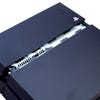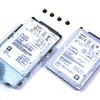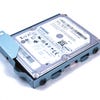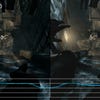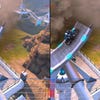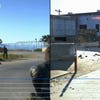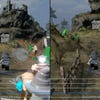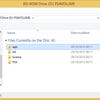The PlayStation 4 hard drive upgrade guide
Digital Foundry tests faster HDDs, hybrid drives and SSDs. Do games load faster and play more smoothly?
UPDATE: 25/8/14 12:54pm - Looking for a cheap 2TB upgrade for your PlayStation 4? A couple of months after publishing our original guide to upgrading your PS4 hard drive, we put together this this piece on the best value 2TB upgrade path we could find, comparing its performance to the replacement drives we discuss in-depth below.
Looking at individual components of the PlayStation 4, Sony's brand-new hardware is anything from 6x to 16x more powerful than its predecessor - but there's one area that has remained completely unchanged. The PS4's 500GB 5400rpm hard drive isn't just of a similar spec to the PS3 Super Slim's - on our launch model at least, it's actually the exact same unit. Thankfully, this is the one part of the hardware that users are free to upgrade themselves - so that's exactly what we did.
Our objectives here are twofold. On the one hand, with game installs often ranging from 20-50GB, it's clear that the PS4's stock hard drive can fill up pretty quickly - so we're interested in getting the most cost-efficient upgrade. But more than that, we wanted to see what happens when the standard hard drive is replaced with better, faster technology. Would we see faster boot times? A more responsive front-end? Would games load quicker? Would intrusive streaming issues and pop-in be resolved?
It's a topic we've been thinking about for some time, but only now do we really have a wide enough range of software to test in order to come up with some tangible results worthy of a buyer's guide. For example, as we mentioned in our Face-Off, Square-Enix's Thief suffers from some poor frame-pacing issues which appear to be related to streaming new assets from the hard drive. Meanwhile, the recent release of RedLynx's Trials Fusion allows us to put virtual texturing technology - also seen in id software's Rage - to the test. On PS3, swapping to a better drive could massively improve the cohesiveness of the game's presentation. Could we see similar improvements on PS4, with the added bonus of more space to store our games and media?
"Each component of the PlayStation 4 is a clear generational leap over its PS3 equivalent - except for the hard drive."
So, what are the drives we've chosen to test? After all, there are literally hundreds, if not thousands, available on the market, and a fair few in our office collection too. We decided to narrow our choices down to three quite particular upgrades. First up we have the Hitachi Z7K1000 - a 7200rpm 1TB drive that is effectively a larger, faster version of the stock unit. It's a popular choice owing its faster rotational speeds and keen price point (£53/$75). Next we have the 240GB Crucial M500 SSD. It costs around £85/$120, so you take a massive hit in terms of cost per gig, but with the benefit of flash storage you have instant access to any point on the drive and much faster throughput. And finally we have the Seagate 1TB hybrid SSD/HDD (£69/$95). This has a good quality 5400rpm drive backed up by 8GB of flash storage, with the drive itself caching often-used areas of the disk to memory for faster access. But would that actually make any difference on PS4? Our tests on PS3 showed a little promise, but overall proved inconclusive...
Before we move on, it's also worth pointing out that there are at least two different 500GB 5400rpm drives that we know of doing the rounds inside the PS4: the Hitachi Z5K500, and another drive of similar spec manufactured by Samsung. Our console shipped with the Hitachi drive, although we imagine that performance shouldn't be that different between the two in order to ensure that the core experience is closely matched between PS4 units - it wouldn't be wise for Sony to choose drives with noticeably different characteristics.
Basic tests: benchmarking the drives
To kick things off, let's start with a few basic tests to determine the raw performance of each unit, carried out using PC tools Crystal Disk Mark and HD Tune. Doing this allows us to see exactly what each drive is capable of in a tightly controlled manner, and should give us some strong indications as to where the potential benefits might lie.
For the most part the results are pretty much as we expected: we see clear increases in read/write speeds over the stock PS4 hard drive with both the 7200rpm HDD and the SSD. In particular, sequential read/write speeds are almost twice as fast in the SSD compared to the stock PS4 drive, and access times (basically, the time it takes the drive to move from one file to the next) are virtually non-existent - latency is within 0.1ms, compared to 12ms and higher for the other drives. On PS3, the access time was by far the most important factor in deciding on an upgrade - after price per gig, of course.
"Can a drive upgrade deliver more than just extra space? In our tests, we put a faster 7200rpm drive, a hybrid SSD/HDD and a full-on SSD through their paces."
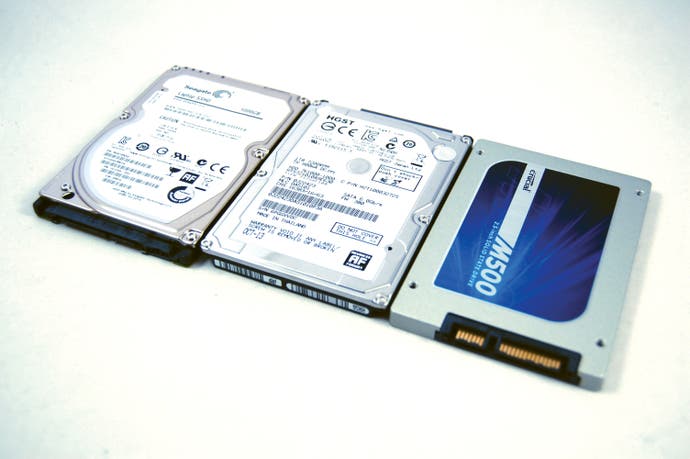
| Stock Drive | 1TB Hitachi Z7K1000 | 1TB Seagate Hybrid | 240GB Crucial M500 SSD | |
|---|---|---|---|---|
| Read Speed (Sequential/512K) | 116.5MB/s / 40.4MB/s | 132.9MB/s / 42.6MB/s | 95.9MB/s / 40.6MB/s | 191.9MB/s / 189.7MB/s |
| Write Speed (Sequential/512K) | 114.4MB/s / 40.7MB/s | 127.9MB/s / 55.7MB/s | 106.7MB/s / 62.8MB/s | 211.8MB/s / 62.7MB/s |
| Access Time | 21.1ms | 17.3ms | 6.9ms to 20.9ms | 0.06ms |
Order our comparison hard drive drives with free shipping:
- 1TB Hitachi Z7K100 from Amazon UK or Amazon US.
- 1TB Seagate SSHD Hybrid from Amazon UK or Amazon US.
- 240GB Crucial M500 SSD from Amazon UK or Amazon US.
Judging by previous PS3 performance tests, lower-latency access should lead to noticeably faster installs as the data can be more quickly unpacked and processed compared to mechanical storage drives. Interestingly, metrics for the hybrid drive initially prove disappointing, presenting us with considerably lower read/write speeds compared to the other drives - it's possible that the unit's 5400rpm platters are the cause here. However, re-running the benchmarks multiple times has a dramatic effect on access times - reducing from an unremarkable 20.9ms down to a minimum of 6.9ms - what we're seeing here is the drive firmware adapting to the SSD caching and providing a remarkable boost. It's still not as fast as SSD, but it's three times faster than the stock drive.
Ultimately, these benchmarks confirm that the SSD is much faster than the other drives, and has the potential to significantly improve specific areas in performance where the PS4's HDD is the bottleneck. The hybrid SSHD is something of a mixed bag based on read/write performance alone. However, if the drive's 'learning' software can successfully store the most commonly accessed data into the onboard flash memory, then it might be possible to see improvements to bring it closer into line with the SSD.
However, if there's one thing our PS3 testing taught us, it was that while the PC is a great test-bed for discerning the raw limits of a potential hard drive upgrade, it's very rare indeed for the console to get anything like top-end performance. We suspect it's the same situation with PS4 - we copied off a Battlefield game capture via USB 3.0 to an external SSD and discovered a relatively slow 22.46MB/s read speed from the stock drive. Now, this may well be a limitation of the USB controller, but speeds were similarly limited on PS3 too.
Booting the PS4, front-end performance and game installs
Our first test yields instant dividends. With each of our replacement drives we see a distinct boost in speed in the front-end, kicking off with a few seconds getting shaved off the time it takes for the console to boot up. Icons for the various games and apps we have installed also appear more quickly. Bigger storage means more content, and the ability to navigate the front-end quickly and efficiently definitely helps.
The hybrid drive also puts in a reasonable performance here once the console has been running for a couple of hours. Initially we saw very little improvement, but the drive does appear to 'learn' which content it should be accessing from the flash memory, resulting in a mild speed boost over the standard hard drives. In comparison, both HDDs gave us similar boot results, with little to distinguish between them, though general front-end performance was a touch smoother on the upgrade.
"Each of our upgrade drives managed to improve both boot times and the general fluidity of the PS4 interface."
| Stock Drive | 1TB Hitachi Z7K1000 | 1TB Seagate Hybrid | 240GB Crucial M500 SSD | |
|---|---|---|---|---|
| Boot Time (seconds) | 12.75 | 12.15 | 10.10 | 08.32 |
In terms of disc-based games, installation times are mostly bound by the slow read speed and seeking of the PS4's Blu-ray drive, which is a lot slower than any modern hard drive. Data needs to be read from the optical drive and written to the hard drive - a two-part procedure, and one where we can only improve one stage of the process. This limits the potential to really cut down install times by large amounts, although it's still possible to yield some improvement once the data reaches the hard drive.
On the whole, the SSD manages to cut down install times by around 8-10 seconds in Call Of Duty: Ghosts, Thief and Need for Speed: Rivals, with these games taking almost a minute to install when using the stock PS4 HDD. In comparison, the hybrid SSHD and 7200rpm HDD still manage to hand in decent speed boosts over the stock hard drive but the improvements are not exactly revelatory. In the case of the hybrid SSHD, this drive is simply limited by the 5400rpm platters, which have a tangible impact on access times. A simple install is unlikely to call the flash memory into operation. In our PS3 drive tests, the older generation hybrids had lower amounts of flash memory, but they were backed by faster 7200rpm drives - we would have preferred the best of both worlds here.
Overall though, it's clear that while there are some differences, the likely impact of the drive upgrade in performance terms can't really be measured. The Blu-ray drive itself is the major limiting factor.
"Our install tests showed relatively small gains across the drives - with the price premium of the SSD and hybrid drives not really justified by the performance boost."
| Install Time (secs) | Stock Drive | 1TB Hitachi Z7K1000 | 1TB Seagate Hybrid | 240GB Crucial M500 SSD |
|---|---|---|---|---|
| COD: Ghosts - Retail | 51.88 | 55.60 | 55.27 | 49.13 |
| Thief - Retail | 50.59 | 48.49 | 50.59 | 45:32 |
| MGS5: Ground Zeroes - Retail | 20.48 | 18.23 | 17.23 | 17.80 |
| NFS Rivals - Retail | 33.22 | 31.12 | 30.56 | 26.42 |
| Trials Fusion - PSN | 22.88 | 22.08 | 18.47 | 17.30 |
| Lego Marvel Super Heroes - PSN | 22.15 | 20.78 | 23.48 | 17.28 |
| Rayman Legends - PSN | 19.33 | 13.22 | 19.45 | 12.20 |
| Resogun - PSN | 08.17 | 04.63 | 06.93 | 03.07 |
Installation of digitally downloaded content provides us with a slightly different picture. Here the speed of data access is determined primarily by hard drive performance - particularly access times. Much more is asked of the drive here - it has to read data from one area of the drive and write it in another. It's a significantly tougher workout. However, gains across the board from our upgrades are still somewhat muted - though the improvement seen in Rayman Legends suggest that faster drives could hand in a much stronger performance given a larger game to install.
Overall, the SSD wins across the board delivering the shortest install times in all PSN downloaded games we tested, but the scale of the increase varies considerably, calling into question the value of the upgrade bearing in mind how much you lose in terms of cost per gig. There's a sense that day-to-day console operation feels a little faster paired up with an SSD, even though this extra speed boost varies across different games and situations: boot times are reduced and application icons on the dash pop up more quickly. Performance varies on the other drives, and while there are improvements, the overall feel is much closer to the stock drive. What's clear is that install times can be improved with an upgrade, but there's hardly a revelatory improvement, and even the SSD doesn't quite live up to expectations.
Loading times is a rosier picture in some games - we see all of our drives hand in appreciable boosts over the standard stock drives, and on occasion we see thunderously good loading times with the SSD. However, these are the exception rather than the rule, and despite its technological disadvantages, the 5400rpm stock drive isn't that much slower than the upgrades. Although disappointing in some respects, it's actually good news in others - why spend the extra money on a hybrid drive, when a 2TB 5400rpm unit isn't that much more expensive? It seems that just like PS3 upgrades, cost per gig is the biggest consideration in choosing a new HDD.
"Loading times improve - sometimes substantially - with our upgrade drives, but we'd still take price per gig as the primary factor in deciding which drive to choose."
| Loading Time (secs) | Stock Drive | 1TB Hitachi Z7K1000 | 1TB Seagate Hybrid | 240GB Crucial M500 SSD |
|---|---|---|---|---|
| COD: Ghosts - Initial Load | 23.60 | 19.67 | 19.22 | 16.53 |
| COD: Ghosts - Ghost Stories | 38.25 | 33.22 | 30.10 | 28.80 |
| COD: Ghosts - Struck Down | 29.22 | 27.13 | 26.85 | 26.85 |
| Thief - Level One Load | 52.08 | 34.67 | 34.67 | 34.43 |
| Thief - Level Two Load | 23.50 | 20.98 | 23.01 | 21.04 |
| Thief - Level Three Load | 38.97 | 37.12 | 36.72 | 35.57 |
| MGS5: Ground Zeroes - Initial Load | 44.93 | 43.30 | 41.67 | 32.82 |
| MGS5: Ground Zeroes - Renegade Threat | 15.33 | 14.13 | 15.20 | 14.43 |
| MGS5: Ground Zeroes - Classified Intel | 14.71 | 14.76 | 14.79 | 13.98 |
| NFS: Rivals - Initial Load | 18.25 | 18.14 | 17.59 | 16.40 |
| NFS: Rivals - Start Game | 24.85 | 24.85 | 25.10 | 23.17 |
| NFS: Rivals - To Race | 11.01 | 10.91 | 10.84 | 10.74 |
| Trials Fusion - Initial Load | 04.70 | 04.52 | 03.82 | 04.42 |
| Trials Fusion - Stage One | 15.11 | 13.17 | 13.10 | 13.10 |
| Trials Fusion - Waterworks | 13.01 | 09.67 | 09.62 | 09.62 |
Can a hard drive upgrade boost game performance?
While the PS4 has up to 5GB of RAM available for use in games, filling that space up isn't easy - users could be faced with extremely long loading times, and having all the assets in RAM for a particular level/stage limits the potential to have more varied details on screen. In order to get around these issues, many games utilise the PS4's hard drive as a cache, streaming graphics data into RAM when needed. Trials Fusion is one such title and uses a similar system to the one used in id Software's Rage, where textures are quickly transferred into memory from the console's hard drive in small chunks - a process known as virtual texturing. This allows for a wider range of artwork to be displayed on screen and less instances of texture repetition across the environment. The downside is that transitions between texture mip-maps (different quality assets) are noticeable during gameplay as the PS4's HDD struggles to keep up.
The use of an SSD makes a big difference here, dramatically lowering the amount of texture pop up we see: while mip-map transitions aren't completely eliminated, artwork is streamed in much more quickly compared to the stock HDD, reducing the time taken for higher resolution assets to appear on screen. The hybrid SSHD holds up pretty well too, beating the regular HDDs in loading in high-quality artwork after restarting a stage mid-way through completing the course, although performance isn't quite as dependable as the solid state drive. There are times when the results are only mildly improved compared to the 7200rpm HDD.
Performance in this area is definitely much better with the SSD; however, the results aren't quite as remarkable as we expected given the boost in read/write speeds, and especially access times - there are still some texture streaming issues when restating a course after a crash, and when cycling through the various terrain options using the game's creator mode. This does suggest that streaming speed in Trials Fusion is limited by other factors than hard drive speed, and this is also something that translates over to many other games we used in our tests.
"Trials Fusion's virtual texturing tech reveals a clear SSD advantage, and even the hybrid drive hands in a performance that bests the traditional mechanical drives."
Turning our attention to a range of different titles, we noted that level of detail transitions and texture pop-up remained identical across the likes of Call of Duty: Ghosts, Metal Gear Solid 5: Ground Zeroes, and Lego The Hobbit regardless of which drive was installed in our PS4. Factoring out subtle variances in frame-rate and screen tear with regards to real-time rendering (in Call of Duty: Ghosts in particular), LOD transitions were a match, right down to a single frame.
Overall, it appears that streaming speed and changes in asset quality are mostly determined by LOD set-up in these games rather than how much data the PS4's hard drive can move in comparison to SSDs and other fast storage media. There's also the possibility that all of the main assets have already been loaded into the PS4's RAM in these titles, meaning that the extra bandwidth and reduced access times offered up by the SSD and other drives over the stock PS4 HDD would have no affect with regards to how quickly textures and other objects are displayed on screen.
In terms of performance, in our Thief Face-Off it appeared that some of the game's frame-rate drops and its noticeable judder could be attributed to streaming issues, with the engine not loading in assets quickly enough for the game to process. This was easily visible in an early sequence in the game, where the player chases another character across the rooftops at high speed - as new areas of the environment appear and camera angles change, frames are dropped and smoothness is lost. However, despite various advantages in the speed at which data is handled over the stock PS4 HDD, we found no measurable improvements in performance by switching to a faster storage device, suggesting that the problem instead stems from a CPU bottleneck. Similarly, the regular tearing and variances in frame-rate in Call of Duty: Ghosts under load remained unchanged when using an SSD. Other titles also featured no significant changes in performance when run from any of our upgrade drives, including the SSD: torn frames appeared almost at exactly the same moments in Trials Fusion in near like-for-like scenes, for example.
"Games rely heavily on background streaming, but our drive upgrades showed little or no improvement here."
PS4 hard drives upgrade: Digital Foundry buying advice
PS4 Blu-ray games are seemingly identical to the digital releases, to the point where analysis of the disc itself reveals that the vast bulk of the data is contained in a single .pkg file - the same data structure as downloads from the PlayStation Network. All PS4 titles are designed to install and run directly from the console's hard drive, and we anticipated that there could be huge gains in switching to much faster storage solutions.
However, the reality is that while PS4 has much in common with the PC from an architectural standpoint, disk IO operations are much closer to the PlayStation 3 in practice. That being the case, just like PS3, outside of certain titles the benefits aren't quite as dramatic as one might expect should you choose to install an SSD into your console. Loading and install times are shorter - considerably so in some cases - but this doesn't translate equally across all titles. Performance also remains unchanged in all of the games we tried, with no clear measurable increases in frame-rate or reductions in tearing and judder at times when it appears that streaming could be one of the main causes. In short, there's no repeat of the scenario we saw last-gen where, for example, Skyrim ran much more smoothly from an SSD.
There are some improvements, though: the process of booting up the PS4, getting to the console's dashboard, and then loading up a game is noticeably quicker with an SSD installed in place of the stock hard drive, making system operation feel that little bit more fluid throughout day-to-day use. This alone isn't really worth the trade-off in diminished storage capacity compared to the 500GB drive that comes with the machine though, and we would hope that developers continue to optimise with the stock 5400rpm drive in mind, producing only limited returns for faster hardware.
"Put price per gig at the head of your HDD upgrade decision-making, followed by access time if you're looking for the best boost to loading times."
A smaller improvement over the standard PS4 HDD is possible using faster mechanical drives, so if you require more storage and like the sound of faster loading times, a decent 1TB 7200rpm hard drive like the Z7K1000 we tested here provides a nice low-cost upgrade with plenty of space for your games, apps and other content - just don't expect massive increases in performance over the stock HDD across the board, and treat any faster operation as a bonus.
Of course, the fact that the PS4 is compatible with any 2.5-inch hard drive (with a capacity of 160GB or over) means that there are hundreds of options out there, and we wish we could have tested more of them. Something worthy of serious thought is a 2TB 5400rpm drive: typically, the higher the storage, the more data is crammed onto the platters, so while 5400rpm may not sound particularly fast, bandwidth does increase according to data density. If we were to start this feature from scratch, we would probably swap in one of these drives in favour of the hybrid SSHD - the variable success we got from the onboard caching suggests that the price premium isn't really worth it. On the flipside, while 2TB 2.5-inch 5400rpm drives are expensive, USB 3.0 "passport" variants are actually cheaper, and only a little pricier than the hybrid drive. There's another bonus too: prise the drive out from the enclosure and not only do you have a PS4 upgrade, you also have a caddy in which to house your old 500GB HDD. [UPDATE 28/8/14 12:54pm - and that's exactly what we've done here - check it out.]
However, the fact that the hybrid offers up some occasionally decent gains in performance does open up a tantalising proposition. The PS4 reserves an area of the hard drive (believed to be on the outside of the platter, where performance is best) for game developers to cache data. What if Seagate worked with Sony on a bespoke drive upgrade that ensured that the SSD flash was used exclusively for the cache? Combine that with a 7200rpm drive and we could be looking at the best of both worlds - SSD speeds where it could really make a difference, combined with the cost-effective level of storage that an SSD can't provide right now.

